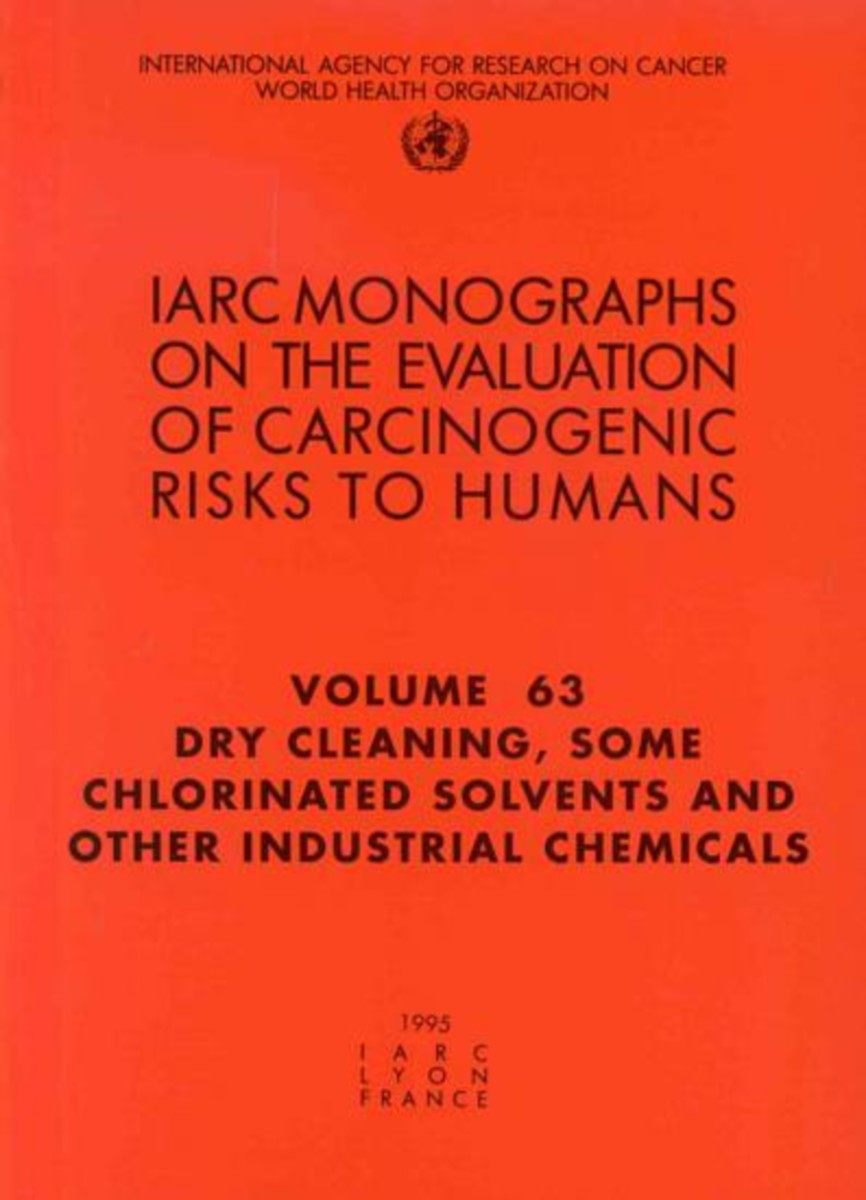Dry-Cleaning, Some Chlorinated Solvents and Other Industrial Chemicals
- Publisher
World Health Organization - Published
1st September 1995 - ISBN 9789283212638
- Language English
- Pages 551 pp.
- Size 6.75" x 9.5"
Evaluates the carcinogenic risks to humans posed by exposures in the dry cleaning industry by eight chlorinated solvents and related chemicals and by an additional group of seven industrial chemicals. Dry cleaning is evaluated in the first and most extensive monograph. Concerning exposures to specific chemicals, tetrachloroethylene is identified as the most commonly used solvent during the last two to three decades. The evaluation also considers exposure to the wide range of chemicals used in the treatment of spots. A review of epidemiological studies on dry cleaning indicates that the risks for cancers at two cites, urinary bladder and esophagus, may be increased by employment in dry cleaning. The monograph concludes that dry cleaning entails exposures that are possibly carcinogenic to humans. A second group of monographs evaluates selected chlorinated solvents and related chemicals used in dry cleaning, metal cleaning, and degreasing as chemical intermediates and in the production of insecticides and herbicides. Trichloroethylene, tetrachloroethylene, and 1 2 3-trichloropropane were classified as probably carcinogenic to humans. 1-Chloro-2-methylpropene was classified as possibly carcinogenic to humans. The remaining chemicals - chloral and chloral hydrate, dichloroacetic acid, trichloroacetic acid, and 3-chloro-2-methylpropene - could not be classified. For the remaining seven chemicals used in a diversity of industrial applications, vinyl fluoride was classified as probably carcinogenic to humans. Furan, benzofuran, and vinyl acetate were classified as possibly carcinogenic to humans. Acrolein crotonaldehyde and furfural could not be classified.
The International Agency for Research on Cancer
The International Agency for Research on Cancer (IARC) is part of the World Health Organization. IARC's mission is to coordinate and conduct research on the causes of human cancer, the mechanisms of carcinogenesis, and to develop scientific strategies for cancer control. The Agency is involved in both epidemiological and laboratory research and disseminates scientific information through publications, meetings, courses, and fellowships.


